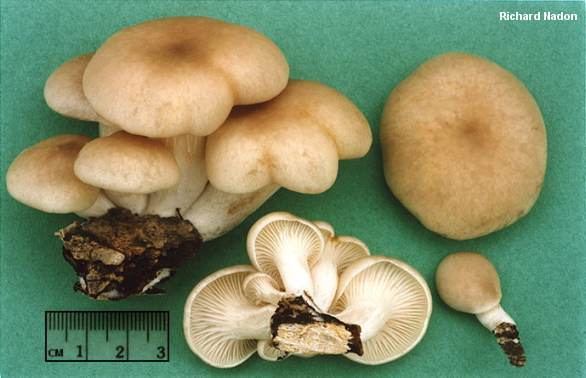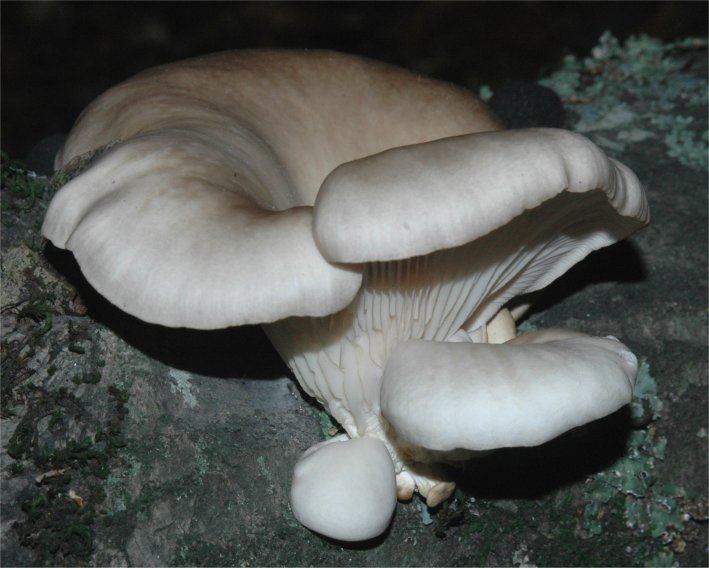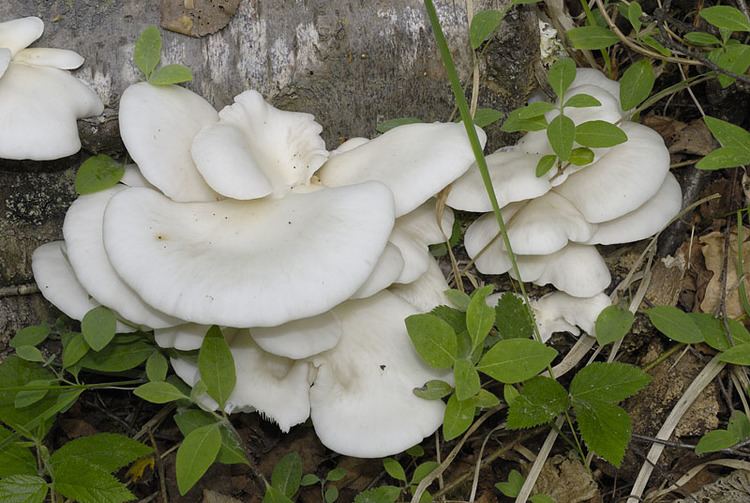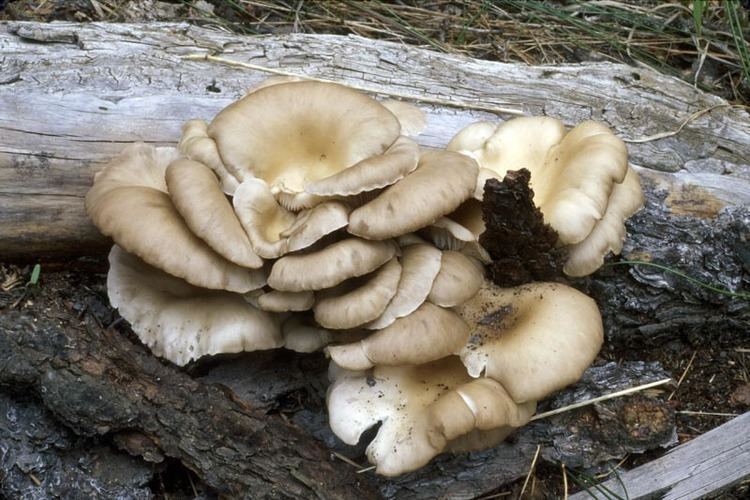Order Agaricales Genus Pleurotus Higher classification Pleurotus | Division Basidiomycota Scientific name Pleurotus pulmonarius Rank Species | |
Similar Cyclocybe aegerita, Pleurotus citrinopileatus, Chwinamul, Pleurotus eryngii, Shaggy parasol | ||
Pleurotus pulmonarius fungi kingdom
Pleurotus pulmonarius, commonly known as the Indian Oyster, Italian Oyster, Phoenix Mushroom, or the Lung Oyster, is a mushroom very similar to Pleurotus ostreatus, the pearl oyster, but with a few noticeable differences. The caps of pulmonarius are much paler and smaller than ostreatus and develops more of a stem. P. pulmonarius also prefers warmer weather than ostreatus and will appear later in the summer. Otherwise, the taste and cultivation of the two species is generally described as largely the same. In North America, P. pulmonarius also closely resembles Pleurotus populinus, which is restricted to growing on aspen and cottonwood (genus Populus).
Contents
- Pleurotus pulmonarius fungi kingdom
- Natural habitat
- Taxonomy
- Description
- Cultivation
- Medical research
- References
Natural habitat

P. pulmonarius is widespread in temperate and subtropical forests throughout the world. In the eastern United States, this species is generally found on hardwoods while in the west it is commonly found on conifers.
Taxonomy
Description

Cultivation

P. pulmonarius is the most cultivated Oyster mushroom (Pleurotus) species in Europe and North America. The most popular varieties for cultivation are the warm weather varieties, often marketed by spawn manufacturers and cultivators under the incorrect name "Pleurotus sajor-caju". The real Pleurotus sajor-caju (Fr.) Singer is in fact a separate species of mushroom, which was returned to the genus Lentinus by Pegler (1975), and is now called Lentinus sajor-caju (Fr.) Fries.

P. pulmonarius is commercially cultivated in New Zealand, and is sometimes sold as "Oyster mushrooms". The archetypal Oyster mushroom, Pleurotus ostreatus, cannot be imported into New Zealand due to perceived risks to their forestry industry.

The cultivation of Pleurotus pulmonarius is very similar to how one would cultivate other types of Pleurotus species like P. ostreatus by transferring mycelium from a petri plate onto grain and then transferring the grain spawn after the mycelium colonizes it to substrates of straw, wood chips, sawdust, cardboard, coffee grounds, and other cellulose-based substrates.
Medical research
Several studies done on animals and in vitro suggest P. pulmonarius and its extracts may have possible medicinal applications for a wide range of conditions.
A polysaccharide called β-D-Glucan from P. pulmonarius reduces sensitivity to pain in mice, and could be an "attractive" basis for new analgesic medications. In a different study on mice, a glucan from P. pulmonarius showed potent anti-inflammatory and analgesic properties. A methanol extract of P. pulmonarius displayed anti-inflammatory and antitumor activity comparable to the standard reference drugs diclofenac and cisplatin, respectively.
A 2010 study concluded that extracts of P. pulmonarius may slow the proliferation of cancer cells with high galectin-3 levels, while at the same time downregulate tumour cell adherence - which is directly related to the progression and spread of cancer. Extracts of P. pulmonarius added to the diet of mice delayed carcinogenesis, suggesting that these extracts may be useful as an adjuvant to cancer therapies.
An orally administered hot water extract of P. pulmonarius had a significant antihyperglycemic effect, halted the progression of diabetes, and reduced the mortality of alloxan induced diabetic mice by approximately 50%. It showed a synergistic effect with the antidiabetic drug glibenclamide, supporting the possibility of effective combination therapy of glibenclamide and P. pulmonarius for diabetes.
P. pulmonarius may be effective in the treatment of hay fever by inhibiting the release of histamine. Powdered P. pulmonarius mushrooms caused a significant reduction in sneezing and nasal rubbing when fed in water to sensitized mice, although the effect gradually builds up over a matter of weeks. When they were given 500 mg/kg a day, a significant effect was observed after two weeks, and it was four weeks before a significant change was observed at 200 mg/kg.
Extracts of P. pulmonarius attenuated the development of acute colitis in a mouse model, suggesting a possible clinical use in the treatment of colitis. A further study by the same authors concluded that the extracts also inhibit colon cancer formation associated with colitis in mice.
Extracts of P. pulmonarius have antimicrobial properties and exhibit antioxidant activity in vitro.
